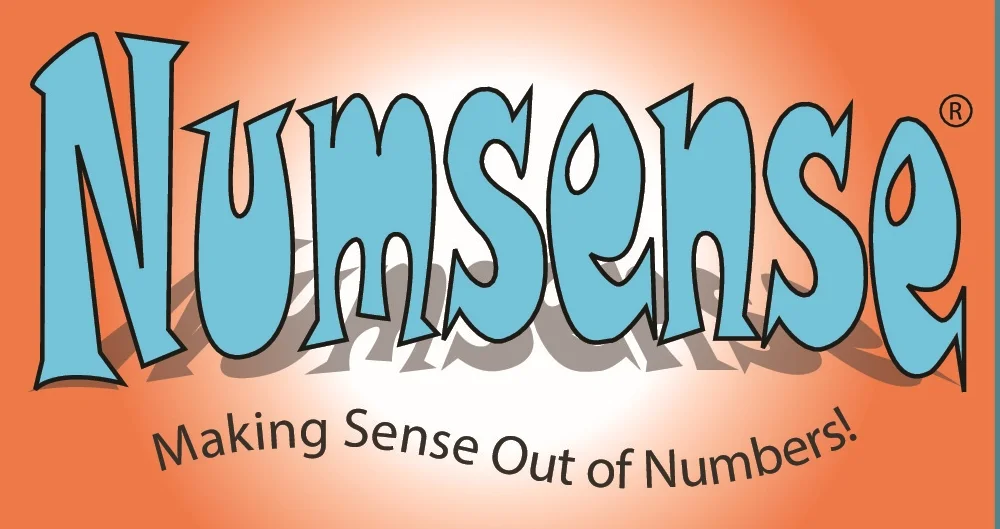Objective
Use all of the cards in your hand to create a number sentence that equals the target number. In your number sentence you can add, subtract, multiply, and divide. You can use each operation as many times as you would like in order to reach the target number.
Game Setup
Deal each player 2 cards. In each round the players get one more card than they had in the last hand. In the second round each player starts with 3 cards, in the 3rd round each player gets 4 cards, and so on until the final round when each person starts with 6 cards.
Draw the Target Number from the deck. If you draw a wild cart, return it to the deck and continue drawing until you draw a number card.
Place the remaining cards face down to make a Draw Pile.
Game Play
The player to the left of the dealer starts and play continues clockwise. After each round the dealer changes, rotating clockwise. On your turn you may:
1) Pick up the top card from the Discard Pile and put down a card from your hand.
You must always keep the same number of cards in your hand that you were dealt to start the round. You may put back the same card you picked up.
2) Pick up the top card of the Draw Pile and put down a card from your hand.
Again, you must always keep the same number of cards in your hand that you were dealt to start that round and again, you may put back the same card you picked up.
3) Declare "Numsense!"
If your hand uses all of your cards to create a math sentence that equals the target number.
When someone declares “Numsense” every other player gets one last turn to make their number sentence or get as close as they can.
Wild Cards
Wild: You can choose the value of this card to be any number from 0 to 25.
Discard: You can exchange this card for any card in the discard pile. You must play this card during your turn, otherwise it becomes a zero.
Mirror: You can choose any card in your hand and match its value. If you had a 3, 5, and the Mirror Wild, you could play your hand having 3, 3, 5, or as 3, 5, 5.
Target: This card has the same value as the Target Number.
Scoring
Once all players have had their final turn, each player calculates their score.
If you can make the target number exactly, you add up the point values of all of the cards in your hand to get your score. (Ex. If the target # was 10 and your hand was (7*2)-4, then your score would be 7+2+4=13.)
If you can’t reach the target number then you must make a sentence that gets as close to the target number as possible and you lose the difference between your final number and the target number.(Ex. If the target # was 10 and your hand was 2, 3, 6, then it is impossible to make 10.You can make 11 by using addition 2+3+6=11, which would make your score 11-10=1, so you lose 1 point. You can also make 9 by using multiplication and subtraction (6*2)-3=9, which would still make your score -1 (10-9=1).
Winning the game
At the end of the fifth round, whoever has the highest score wins.
Because the goal of the game is to have the highest score, there may be times when you have “Numsense” but choose not to declare it.The goal is always to reach the target number, but to do so with the cards of highest value.
Printable Version of the Rules
Click here for a printable PDF version of the Original Rules
Variations
Fixed Card Game—Follow the original rules for Numsense, but instead of changing the number of cards each hand, choose a number of cards that is comfortable for your players. Two and three card hands are quite popular with new players.
First to Score—Follow the original rules for Numsense, but instead of playing five rounds, choose a target score and play until someone reaches that exact score. (First to 25, 50, or 100 points, etc.)
Ten Minute Game—Follow the original rules for Numsense, but set a timer and play as many hands as you can in that time frame. When the timer goes off, finish the turn, and the player with the highest score wins.
Marathon Match—Follow the original rules for Numsense and with each round continue adding cards to your hand (instead of stopping at 6). The largest hand played has been 25 cards per player. See if you can beat it!
Choose a Target—Follow the original rules for Numsense but select the target. This can be played in progression like Rummy (start with 0, then 1, then 2, etc.), or you can repeatedly play working towards the same target (0, 1, 5, and 10 are popular targets for beginners).
Have a variation? Let us know about it at info@numsense.org and we'll add your version here for others to play
